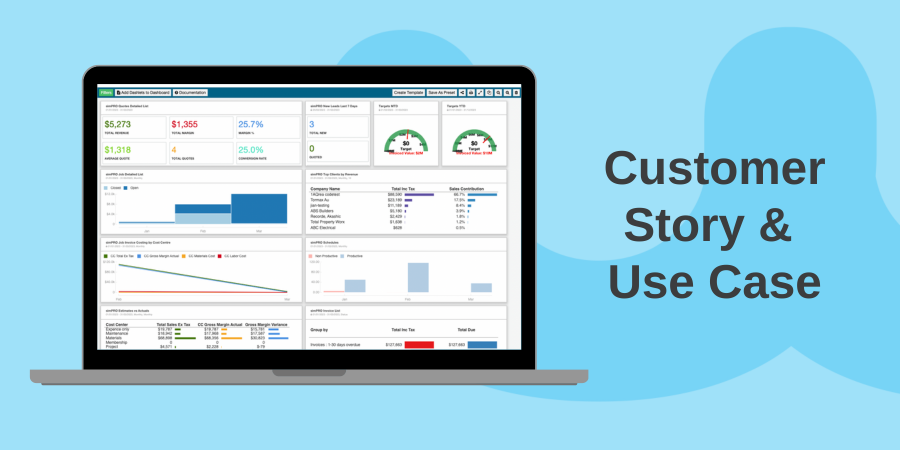How to score with Slack and internal company comms
There have been apps galore on the market since instant messaging became a part of our reality, both personally and professionally. Remember the good old days when Windows Live, MSN Messenger and Skype were the go-to apps for one-on-one and small group chats? The intermittent chat history searches and casual, unbusinesslike feel to it… Then Yammer entered the fray as a popular cross-team communication tool. You could always retrieve a chat history, have personal or private chats, upload documents - it all felt so cool. Microsoft simply owned this space for business!
Nowadays, the choices are endless: you’ve got WhatsApp, Viber, Facebook Messenger, Snapchat, Line, HipChat, Basecamp; the list goes on. And now, in our humble view, the app to beat is Slack.
Back when Wink Reports kicked off in 2013, we were introduced to Slack as the internal company communications platform of choice, and we haven’t looked back since. Starting with the free version, we quickly moved on to a paid subscription. Our Slack implementation hinges on three pillars: Users, Channels and Integrations. If you want to optimize your own use of Slack, we recommend you get these three things right.
Users
From the moment we induct a newbie into the Wink Reports team, Slack becomes a part of their workday. Without exception, every team member uses it all day, every day via a browser on their desktop or on-the-go on their mobile device.
In fact, we don’t just have internal team members using our Slack discussion boards; we also invite key external people (such as development contractors, outsourced marketing team members and client project owners) to certain channels to contribute to discussions. That makes collaboration and awareness of all goings-on that concerns them so much easier.
Slack has a special ‘Guest’ allocation for users outside your company with email addresses that differ from yourname@yourcompany.com. It’s worth bringing your ‘guests’ in by upgrading to a paid subscription, because the benefits of having everyone always on the same page far outweigh that minimal investment.
Once all your team members and collaborators are on Slack (internal or external), the scene is set for easy, direct messaging, visible only to the users participating in a particular chat, group or channel. What doesn’t need to be public knowledge can be confined to quick, direct chats between individual users - this is also an excellent way to retain chat history without annoying or distracting other team members.
From chats to calls! We’ve enabled the native Calls feature, which allows for two or more participants to voice and/or video chat (just like Skype) but where call information can be logged and retained within the app. As for call quality and productivity enhancement, we must say: so far so good, if not excellent.
Emojis might look like a bit of pointless fun, but since it’s well documented that 93% of communication is non-verbal, we find appropriate use of the emoji with the chat functionality very useful actually. It’s a fantastic way to infer tone in discussions, as well as motivate, congratulate and celebrate with other team members. A future study on the right amount of emoji must be on the cards for an academic somewhere. For now, we’ll admit that Wink users aren’t slack with Slack emojis ;)
And to end the workday, Slack’s Do Not Disturb feature is a handy way to signal to teammates and partners that they can send messages but recipients and channel members won’t be notified of those messages until the Do Not Disturb period has ended. This restricts productive time to actual work hours, and ensures that users switch off after a big day to rest and recharge before it all starts again the next day. At Wink, we block out the period from 10pm to 8am each day across the board, so no one’s ever confused about why someone isn’t getting back to them!
Tips on Users:
- Make Slack part of your induction process for new team members
- Invite Guests to the channels you need them to contribute to
- Use Direct Messages and Calls
- Go nuts with emoji
- Use Do Not Disturb ‘zzz’ time
Channels
Straight out of the box, Slack gives you a few channels to start with, including a ‘General’ and ‘Random’ channel. You may want to rename these immediately to ensure that important discussions on specific projects don’t get lost in an open channel without a clearly defined purpose.
The way we’ve structured our channels at Wink is based on our organizational, operational structure, namely #Marketing, #Sales, #Delivery, #Our-Team, and #Admin. It helps that the naming convention is familiar to our entire team. These channels form the foundation for how we use Slack and it makes search, retrieval and focus of discussions that much more efficient and effective. They’re public, so team members can all view and contribute to them. It’s easy for everyone to stay informed of the goings-on at the company, and does away with the “no one told me” excuse! We also have other public channels set up that focus on bot integrations, but more on that later.
Then we have our private channels. These ones tend to contain sensitive content that only nominated team members may access, such as the #Hiring, #Board-of-Directors and #Shareholders channels.
One great advantage of setting up purpose-fit channels is the ability to store, share and retrieve documents relevant to that channel. You can link documents natively right inside Slack or link from document management services like Google Drive or DropBox. We tend to share and distribute documents such as team-wide presentations and customer specs.
Just beware of channel overkill. Creating any more than seven public and three private channels can become counterproductive. Keep it streamlined and give your team and guests clear sight of where and how to collaborate and communicate. More channels don’t necessarily reflect your business better - searching becomes more difficult, making users apprehensive about where they should post things and chat. If your business runs client projects with a duration of, say, more than three months, then by all means, create project-specific channels for focused communication, but remember to close them off when a project ends.
Tips on Channels:
- Rename or remove default Slack channels upon signup
- Structure your channels to reflect your business organization or operations
- Ensure appropriate access public channels for anyone who must at least be able to view
- Set up private channels for sensitive discussions
- Don’t set up too many channels
- Use the document sharing feature
Integrations
As with other software products that we use, the ability to integrate with Slack is super important to us - we often make a decision on whether to adopt a new app or not based on how well it integrates. Wink has a host of live software integrations with more added to the list all the time.
Here’s how we use integrations in our Slack Marketing, Sales, Delivery, and Our-Team channels.
Marketing
We mainly use our Marketing channel to collaborate with our external agency.
However, we have our scheduled social media content set up to auto-post here too. That way, all team members are looped into the brand’s external messaging, and can also hop onto social to like or share a post. It keeps everyone constantly aware of our branding and external communication, and keeps our brand values front-of-mind on a daily basis.
Sales
Here we use two key integrations - with Wink Reports itself to notify us of new users, and with Stripe to notify us each time a credit card charge is applied to a customer. Find it odd that we make Stripe charges public knowledge? Actually, revenue transparency is a real motivator for team members when they see their efforts rewarded by happy customers.
Also, notification of unsuccessful credit card charges flow through into Slack (if, for example, the customer’s details have expired), which we can immediately act on. It gives the team a valid reason to make contact and re-engage with a customer after a potentially long time of no contact. It’s a welcome opportunity to build strong relationships from the outset when a new user comes to us directly.
Delivery
Our Delivery channel works slightly differently from the others (and without integrations) in that we use it strictly for product improvement and support related discussions. Obviously this is the focus of our business. So, we actually have another dedicated channel called Delivery-Robots, which integrates all of the following bots and leaves our Delivery channel uncluttered:
- Google Drive - from here, we get notifications whenever a folder or document is added, renamed or deleted.
- Wink Reports - we post graphs and metrics about the usage of the Wink platform for the day, such as number of reports run, emails sent, etc. as well as snapshots from internal KPI reports.
- FreshDesk - from here, we get a notification post with each new support ticket created.
- DataDog - from here, any exceptions to predetermined metrics on our server monitoring are posted
- PivotalTracker - from here, we get notified of new stories added to our development schedule.
- BitBucket, GitHub and Django - from these, notifications are posted for a range of actions completed by our Dev team, such as code check-ins, code reviews, etc.
Our-Team
This is our go-to place to discuss all things personnel-related. Topics can be as broad as the scheduling of our 360° performance reviews to the venue for our next team social event. The Our-Team channel has an integration with our shared team Google Calendar. Every Monday morning, an automated post pops up in the channel notifying everyone of team events scheduled for that week. Another notice then pops up on the morning of the event. This way, team members stay informed of where colleagues are or will be, meaning they don’t waste time and effort double booking each other for meetings.
We also like to use Google Hangouts - you can just type /Hangout into a Slack channel to start a Google Hangout and channel participants can attend if they’d like to, well, just hang out.
Once you go Slack, you never look back
There’s a lot more to Slack to cover in just one blog post - things like notifications sounds and the search tools. That really needs an article all by itself.
Just by mastering the Users, Channels and Integrations pillars, you can really optimize your usage of this messaging app. That’s a good start. If you already use Slack, we’d love to hear how it works for you or any tricks you have to share.
If you’re keen to unleash your business potential, take advantage of our 30-day free trial and put Wink Reports to work for your business.
How has data helped you move your business forward? Leave a comment to share your insights with other business owners.





.png?width=450&height=300&name=Simpler%20reporting%203%20steps%20(2).png)